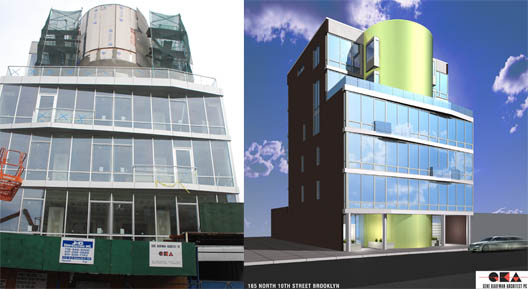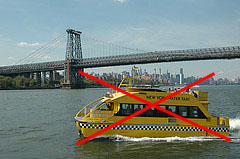There seem to be a world of mixed messages on the 475 Kent front.
First off, I’ve heard that all of the grain has been removed the building. This removes the immediate fire hazard, though the question of operable sprinklers still remains. The “City” (not clear which agency, Office of Emergency Management, I think) is now saying that extensive modifications are required before the building can be occupied. For commercial tenants, occupancy can not occur until “all violations” have been corrected. Residential tenants will not be allowed to occupy the building until the owner files to convert the building to residential use.
The violations that need to be corrected for commercial use appear to refer to NYFD and similar violations – life safety issues that prevent the building from being used for its stated purpose (the building currently has a Certificate of Occupancy for commercial use only; it is in a residential zone, but the CO does not allow residential use). Without knowing the nature of these “violations”, its impossible to say how long it might take to correct them.
With regard to residential occupancy, things are not necessarily as bad as they sound at first blush. If the requirement is truly “filing, by owner, for conversion to a residential building status”, that is something that could happen in a matter of days or weeks, as “filing” is very different than getting an actual approval for such a conversion (as in a TCO or CO).
While all of this sounds good, it requires the owner to hire the right professionals, correct violations and make the necessary applications. (As noted yesterday, the tenants appear to be working with the owner to make some repairs.) On the other hand, the City has also announced that tenants will be allowed into the building during certain hours on Thursday, Friday, Saturday and Sunday. After that, the building will be padlocked and inaccessible (to tenants) indefinitely.






